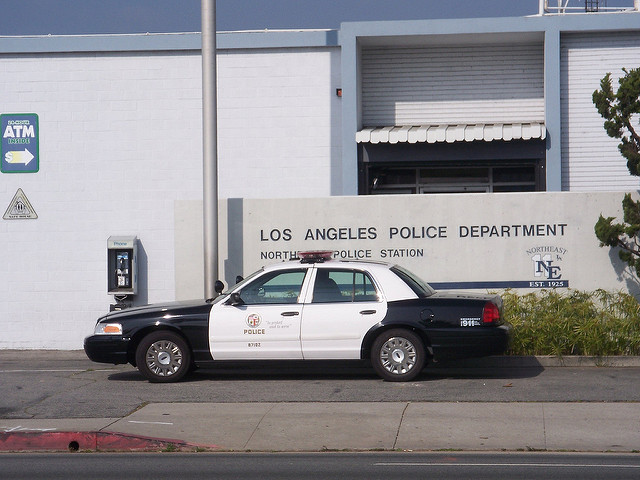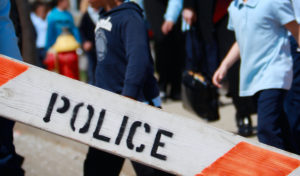
More agencies are embracing a new kind of review focused on preventing future errors, rather than placing blame.
The drumbeat for reforming police use of force on American citizens has reached a deafening volume. Communities are literally on fire in protest of both the persistence of shootings, tazings, and other methods of force or forced restraint, as well as a perceived lack of transparency and accountability in how public agencies review and respond to such events.
With over half a million police officers across the country who are tasked with preventing unsafe and criminal activity, it is unavoidable that some percentage of interactions between police and their communities will deteriorate to confrontation, and that some of these confrontations will be resolved by force.
This is true despite a myriad of well-known deterrence and accountability mechanisms. Every police officer knows in advance that each use of substantial force to subdue criminal activity will be subject to close review by internal and external organizations and authorities in an overlapping series of administrative and disciplinary reviews. What is more, the prevalence of cell phone video means that unofficial—and often incomplete—civilian reviews will also rapidly spread across the Internet. Whatever one may think about these reviews, it is hard to argue that they have been effective at reducing inappropriate uses of force.
Why is that? Part of the challenge is that the administrative and disciplinary reviews described above are intended to mete out blame and punishment. While this may secure some form of compensation for a victim of unauthorized use of force, it reduces the incentives for officers involved in these incidents to share their experiences, and thus limits the use of these reviews as tools for learning how to prevent future unauthorized force.
More recently, law enforcement and criminal justice agencies across the country have begun to embrace a new type of event review, one in which the primary focus is not on blame or punishment, but rather on the creation of a “just culture” of learning, understanding, and education. These “just culture” event reviews go by various names, but whether they are described as root cause analyses or sentinel event reviews, their philosophy is the same: when our law enforcement system generates undesirable events, we should review those events first to understand the true underlying causes of why events unfolded the way they did and how the events could have been avoided, rather than reviewing them to understand who is responsible and should therefore be blamed or punished.
Policing is a complex activity, with multiple people involved in fast-paced, dynamic reactions to incomplete information in a high-stress and high-stakes environment. In such a system, it is inevitable that things will not always go as intended. As the National Institute of Justice has noted, organizational accidents “are rarely the result of a single act or event. In medicine, aviation and other high-risk enterprises, serious errors are regarded as system errors or ‘organizational accidents.’ Organizational accidents are potential ‘sentinel events,’ incidents that could signal more complex flaws that threaten the integrity of the system as a whole.”
Certainly, there are instances where an individual has acted maliciously, intentionally, or in a grossly negligent manner. As a result, in civil litigation and criminal investigations, our focus is on the allocation of blame and on some form of punishment, whether it is physical or financial. But litigation is retrospective and is not seeking to generate learnings for the future.
By contrast, the future is precisely the focus of a sentinel event review, a “nonblaming, all-stakeholder, forward-leaning mechanism—to go beyond disciplining rule-breakers in an effort to minimize the risk of similar errors in the future and improve overall system reliability.” Such investigations, epitomized in other industries through structures like health care’s morbidity and mortality reviews or the National Transportation Safety Board, have a very different set of priorities by seeking to learn how to prevent the next error, rather than to hold participants of the last error accountable.
Such reviews are not focused on blame or discipline. Rather, they begin from the perspective that virtually no police officer wants to use force on civilians, nor do civilians wish to have force used on them. The question then becomes why the confrontation occurred despite the goals of all involved at the outset. We are no longer arguing about who should be blamed, and instead we are discussing how well-intended people on all sides of the undesired interaction could have avoided the confrontation, while still keeping our communities safe.
So what is a “just culture?” One that “recognizes that competent professionals make mistakes and acknowledges that even competent professionals will develop unhealthy norms (shortcuts, ‘routine rule violations’), but has zero tolerance for reckless behavior.” Put differently, a “just culture” treats professionals fairly. It recognizes that intentional misconduct cannot be tolerated, but also that even with training, mistakes will happen and should be evaluated with compassion and empathy.
Expanding the use of just culture event reviews should not eliminate all the other methods that we have of ensuring accountability in our police departments. As the Institute of Medicine had noted in its landmark report, To Err is Human: Building a Safer Health System, professionals “still must be vigilant and held responsible for their actions. But when an error occurs, blaming an individual does little to make the system safer and prevent someone else from committing the same error.”
It is for these reasons that President Barack Obama’s Task Force on 21st Century Policing suggests the widespread implementation of just culture event reviews, or, as the Task Force describes them, “nonpunitive peer reviews of critical incidents separate from criminal and administrative investigations.”
Ultimately, the potential for these just culture event reviews is to create a culture of learning within police departments across the country. This knowledge can then be aggregated into a shared database of experiences that will incorporate findings from one department and share these insights with others, to the benefit of all. This approach has worked exceedingly well in aviation, which has put in place an Aviation Safety Reporting System. With the implementation of a similar system in place in the criminal justice system, we can begin to get at the root causes of police use of force. That is the only way we will protect both the citizens of our communities and our sworn law enforcement officers, and help restore the luster of the badges police officers wear.
This essay is part of a fifteen-part series, Regulating Police Use of Force.




